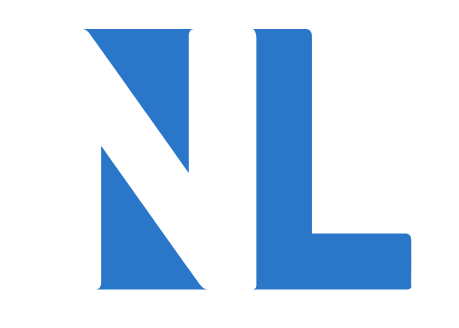What is an IPO?
An Initial Public Offering (IPO) marks the debut of a company’s shares on the stock exchange, allowing the general public to invest in the business for the first time. This pivotal financial event opens doors for companies to raise capital, expand operations, and increase visibility in the market. Understanding the intricacies of IPO secrets can be instrumental in making informed investment decisions in this realm of corporate finance.
In the realm of Initial public offerings, companies undergo a rigorous process before going public, which involves working closely with investment banks, legal advisors, and regulatory bodies to ensure compliance with market regulations. The IPO journey, often shrouded in complexity and confidentiality, requires a deep dive into the company’s financials, growth prospects, and market positioning to gauge the potential of the offering.
The IPO Process
Assessing the IPO process requires a strategic approach and thorough evaluation of the company’s financial health and market positioning. Investors must conduct meticulous pre-IPO analysis to gauge the potential risks and rewards associated with investing in a newly public company. This entails scrutinizing the company’s business model, financial statements, competitive landscape, and growth prospects to make informed investment decisions.
Moreover, navigating the IPO process necessitates a keen understanding of market trends, investor sentiment, and regulatory requirements. From the initial filing with the Securities and Exchange Commission (SEC) to the pricing of the shares and eventual trading on the public markets, each stage demands careful consideration and due diligence. Engaging with financial advisors and industry experts can provide valuable insights into the intricacies of the IPO process, helping investors make sound investment choices.
Analyzing Pre-IPO Information
When considering an IPO investment, analyzing pre-IPO information is crucial for making informed decisions. Timing IPO investments requires a thorough evaluation of the company’s financial health, market potential, and overall growth prospects. By digging deep into the company’s financial statements, industry trends, and competitive landscape, investors can gauge the potential risks and rewards associated with the IPO.
Understanding the IPO risks is essential in assessing the investment viability. Factors such as market volatility, regulatory changes, and company-specific challenges can impact the success of an IPO. Hence, conducting a comprehensive risk analysis based on reliable pre-IPO information can help investors make more strategic and well-informed investment choices.
Timing Your Investment
One crucial aspect to consider when contemplating an investment in an initial public offering (IPO) is the timing of your entry into the market. The allure of potential IPO rewards can be captivating, especially when high-profile IPOs are being publicized. However, it is imperative to exercise caution and not succumb to the temptation of hastily diving into the market without thorough evaluation and strategic timing planning.
Investing in high-profile IPOs can offer significant upside potential, but these offerings also come with elevated levels of volatility and uncertainty. Therefore, timing your investment in such IPOs requires a well-calibrated approach that takes into account the market conditions, the company’s fundamentals, and the overall investor sentiment. By carefully analyzing these factors and being patient in your decision-making process, you can enhance your chances of reaping the rewards while mitigating potential risks associated with high-profile IPO investments.
Risks and Rewards of IPOs
Investing in IPOs can offer significant rewards, but it also comes with inherent risks that investors must carefully consider. One of the key factors to ponder is the distinction between long-term and short-term IPO investments. Long-term IPO investments involve holding shares for an extended period, allowing the company time to grow and potentially increase in value over time. Conversely, short-term IPO investments involve buying shares with the intention of selling them quickly for a profit, often taking advantage of initial price spikes.
While the allure of quick profits in short-term IPO investments may be enticing, it’s essential to remember the volatility and uncertainty that accompany these short-term plays. On the other hand, long-term IPO investments require patience and a thorough understanding of the company’s growth prospects and market positioning. By carefully weighing the risks and rewards associated with different investment horizons, investors can make informed decisions when participating in IPOs.
High-Profile IPOs to Watch
When considering high-profile IPOs to watch, investors are often drawn to companies with strong brand recognition and market potential. These IPOs can generate significant buzz in the financial world, attracting both retail and institutional investors. Companies in industries such as technology, healthcare, and consumer goods tend to garner a great deal of attention during their IPO launches.
Investors should exercise caution when evaluating high-profile IPOs to watch, as hype and excitement can sometimes cloud judgment. Conduct thorough research on the company’s financials, growth prospects, and competitive landscape before making any investment decisions. Keep in mind that investing in IPOs can come with increased volatility and risk, so it is essential to assess your risk tolerance and investment objectives carefully.
Long-term vs Short-term IPO Investments
When considering investing in an IPO, the decision between a long-term or short-term approach can greatly impact your investment strategy. Long-term investors typically aim to hold onto their shares for an extended period, often with the expectation of reaping greater rewards over time. This approach involves a patient and disciplined mindset, focusing on the company’s potential growth and performance over several years.
On the other hand, short-term IPO investments are characterized by a more immediate focus on capitalizing on short-term price movements. Traders employing this strategy often closely monitor market trends and news events to make quick buy and sell decisions, aiming to profit from short-term fluctuations in the stock price. While short-term investments can offer the possibility of quick gains, they also come with higher volatility and risk compared to long-term strategies.



